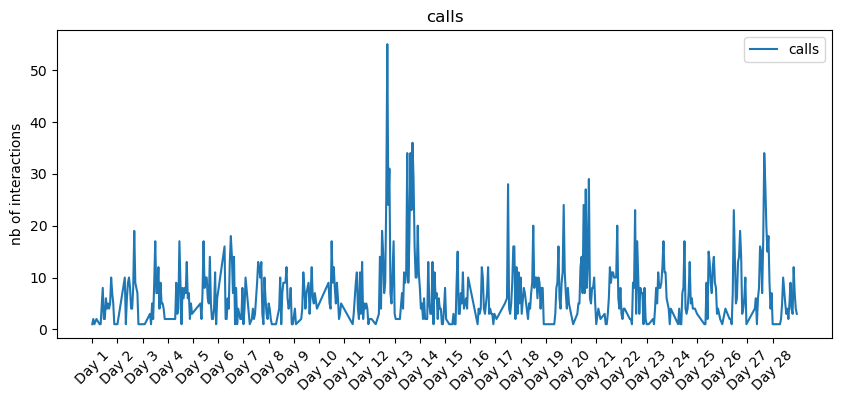Module 1, Practical 10¶
Part 1¶
Several years ago, researchers compiled a dataset known as the “Copenhagen Network study”. This dataset includes a range of information collected from 700 university students. In this exam, we will focus on the following files:
A list of phone calls: calls.csv
Information about Facebook friendships: fb_friends.csv
Student gender data: genders.txt
The data in these files are structured as follows:
calls.csv
timestamp,caller,callee,duration
184,300,301,121
3920,512,299,670
fb_friends.csv
# user_a,user_b
0,512
0,263
0,525
gender.txt
0_M 2_M 3_M 4_M 5_M ...
Write a program that performs the following tasks:
Find the Longest Call: Identify the call with the longest duration from the dataset.
Check Facebook Friendship: Determine if the caller and receiver in the longest call are friends on Facebook.
Display Genders: Print the gender of both students involved in the longest call.
Discretize Interaction Durations: Convert the duration of each interaction from seconds into hourly units. Any interaction that occurs within one hour should be rounded up to 1 (for example, 45 minutes or 3600 seconds both discretize to 1 hour).
Input: The program should take in the file CALLS.
time id_a id_b duration
[
[ 184, 300, 301, 121],
[ 3920, 512, 299, 670],
[ 5623, 301, 300, 504],
[ 9252, 401, 457, -1],
[15466, 512, 0, 5],
[15497, 512, 0, 28],
[26400, 19, 47, 619],
[31312, 687, 310, 11],
[36265, 300, 301, 74],
[37049, 634, 681, 20],
...,
]
output CALLS
time id_a id_b duration
[
[ 0, 300, 301, 121],
[ 1, 512, 299, 670],
[ 1, 301, 300, 504],
[ 2, 401, 457, -1],
[ 4, 512, 0, 5],
[ 4, 512, 0, 28],
[ 7, 19, 47, 619],
[ 8, 687, 310, 11],
[ 10, 300, 301, 74],
[ 10, 634, 681, 20],
...,
]
then plot those interactions, you should obtain a plot like the one bellow! pay attention to x and y labels

NOTE you should define a function for each point.
Show/Hide Solution
[ ]:
